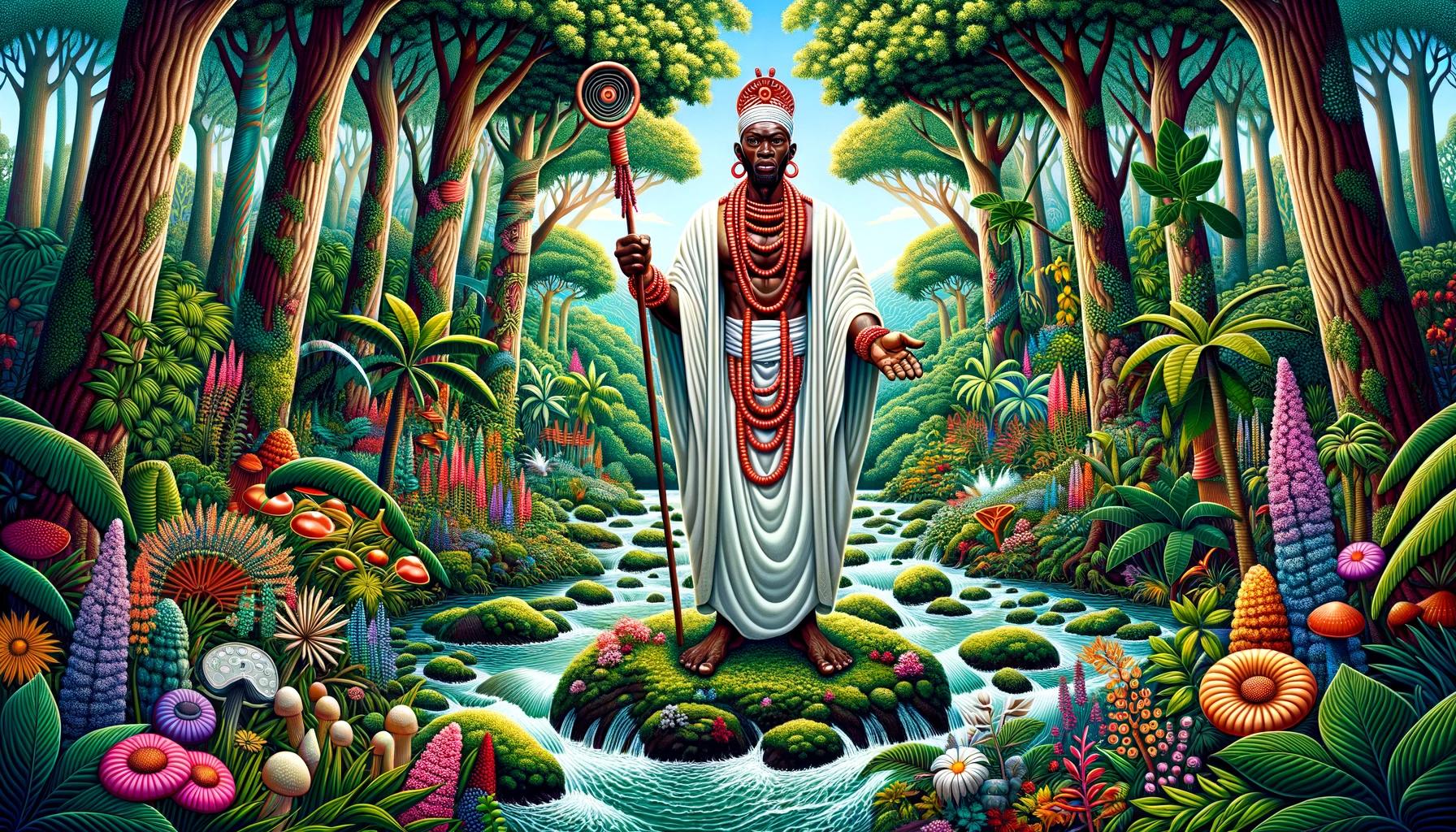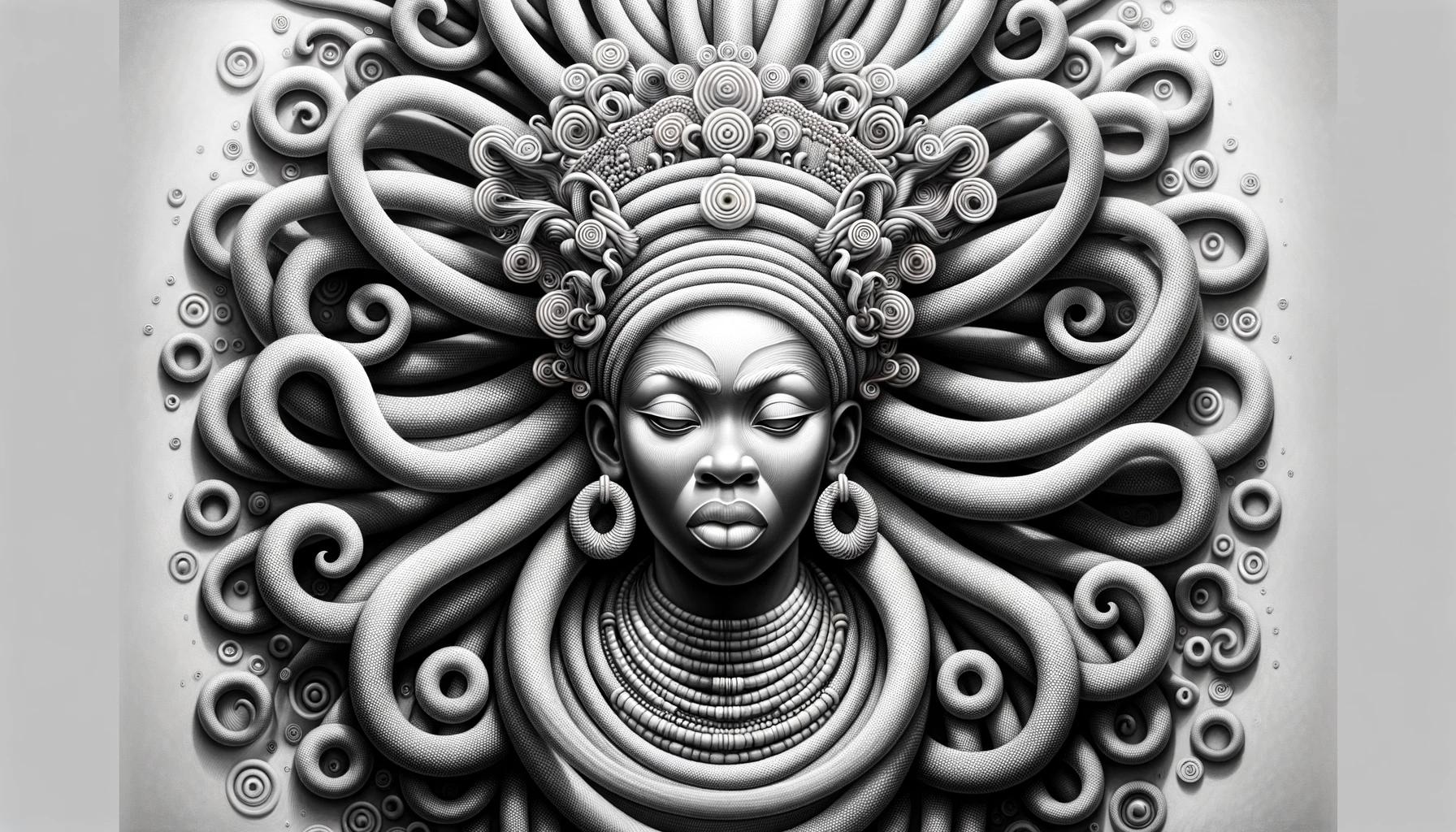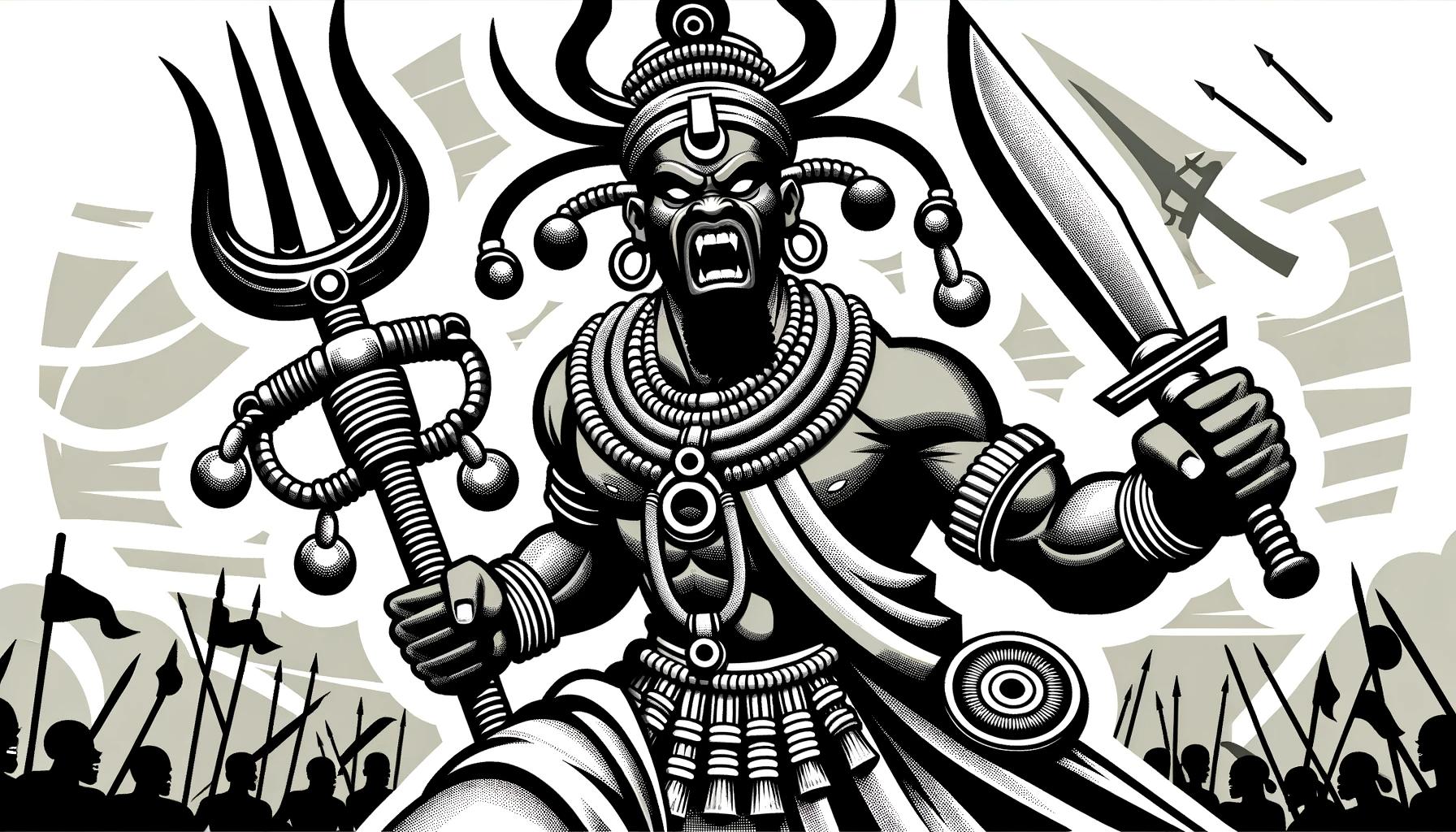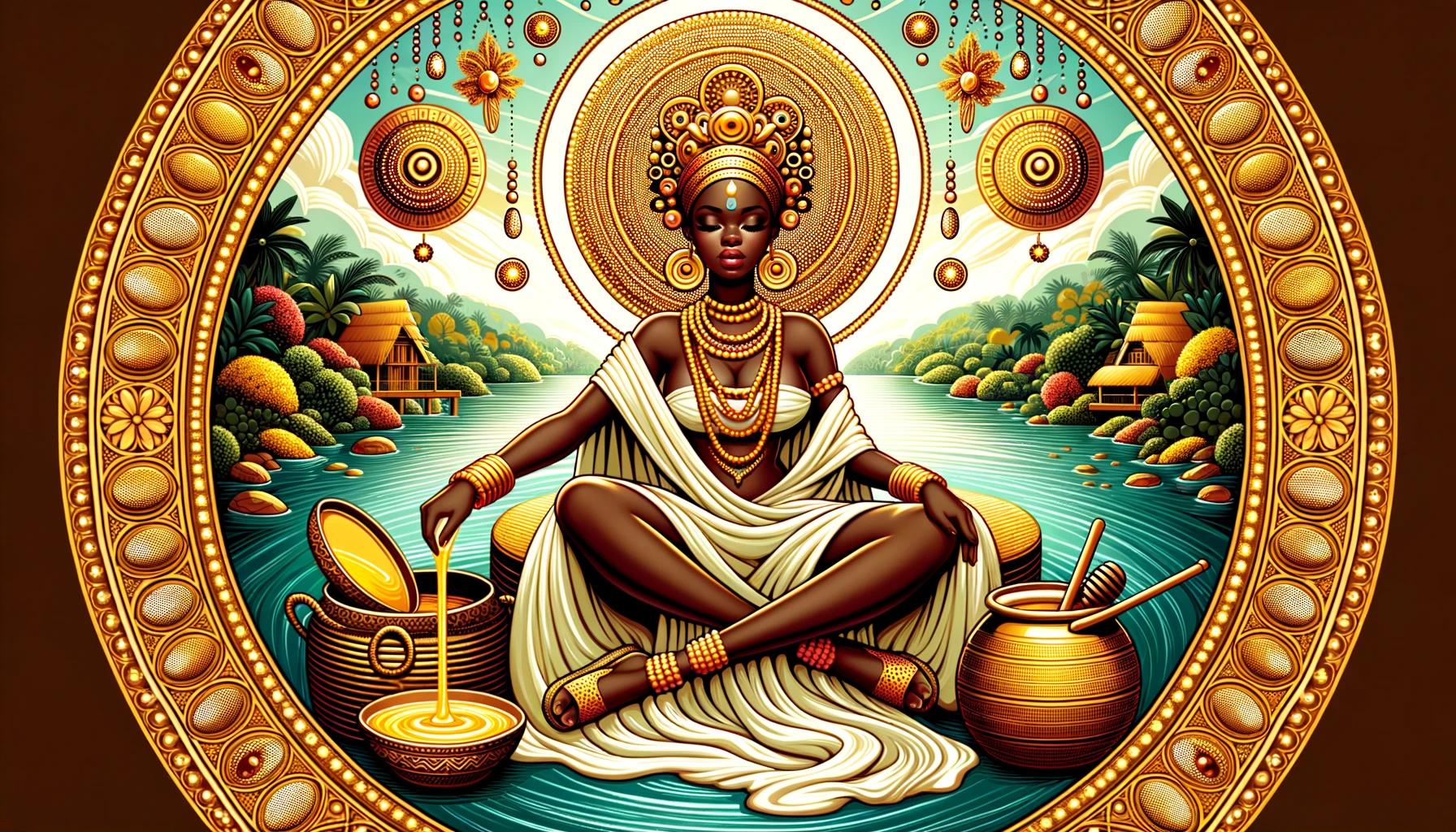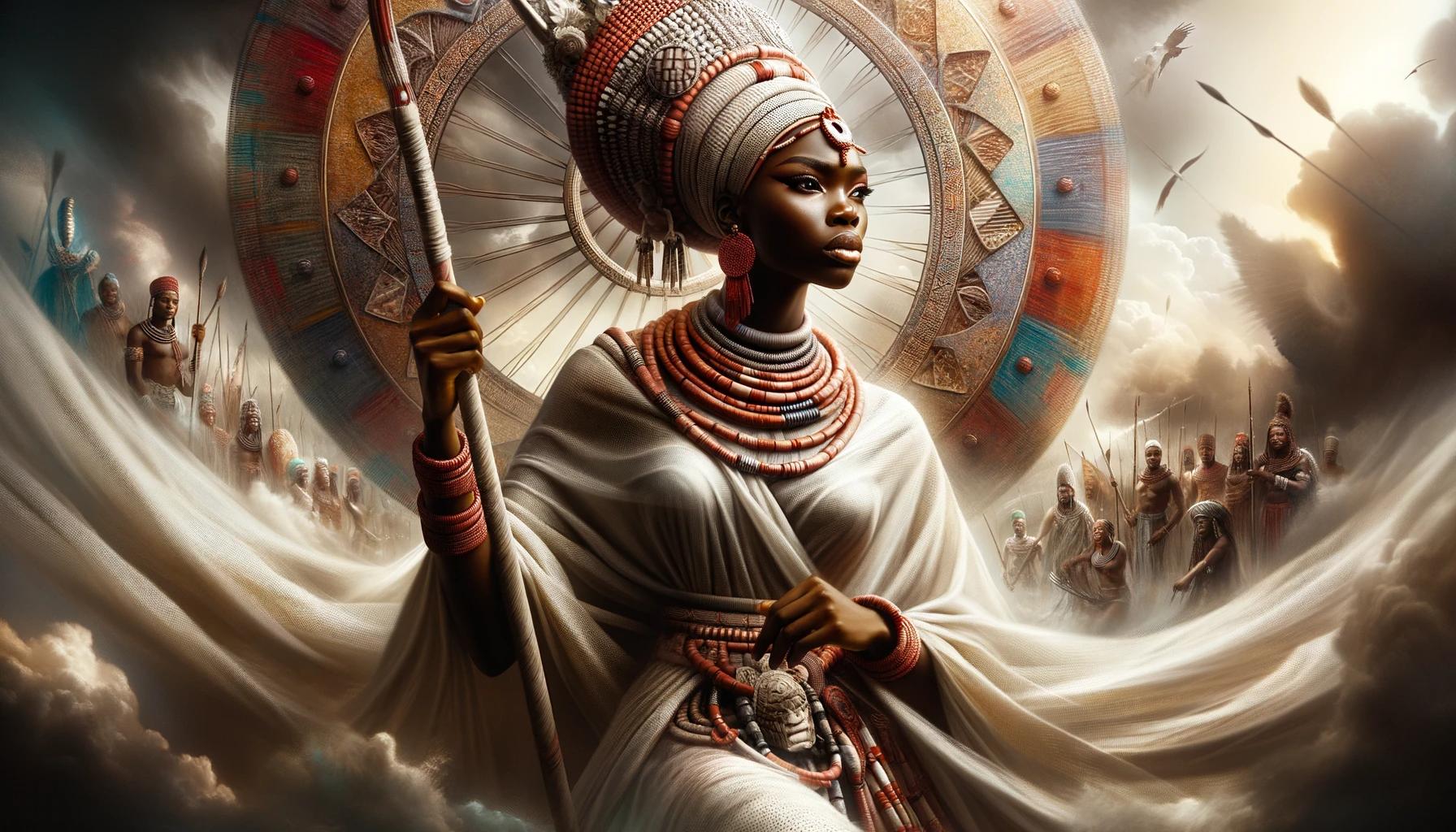Who is Erinle, the African God: Exploring the Deity’s Significance in African American Spiritual Traditions
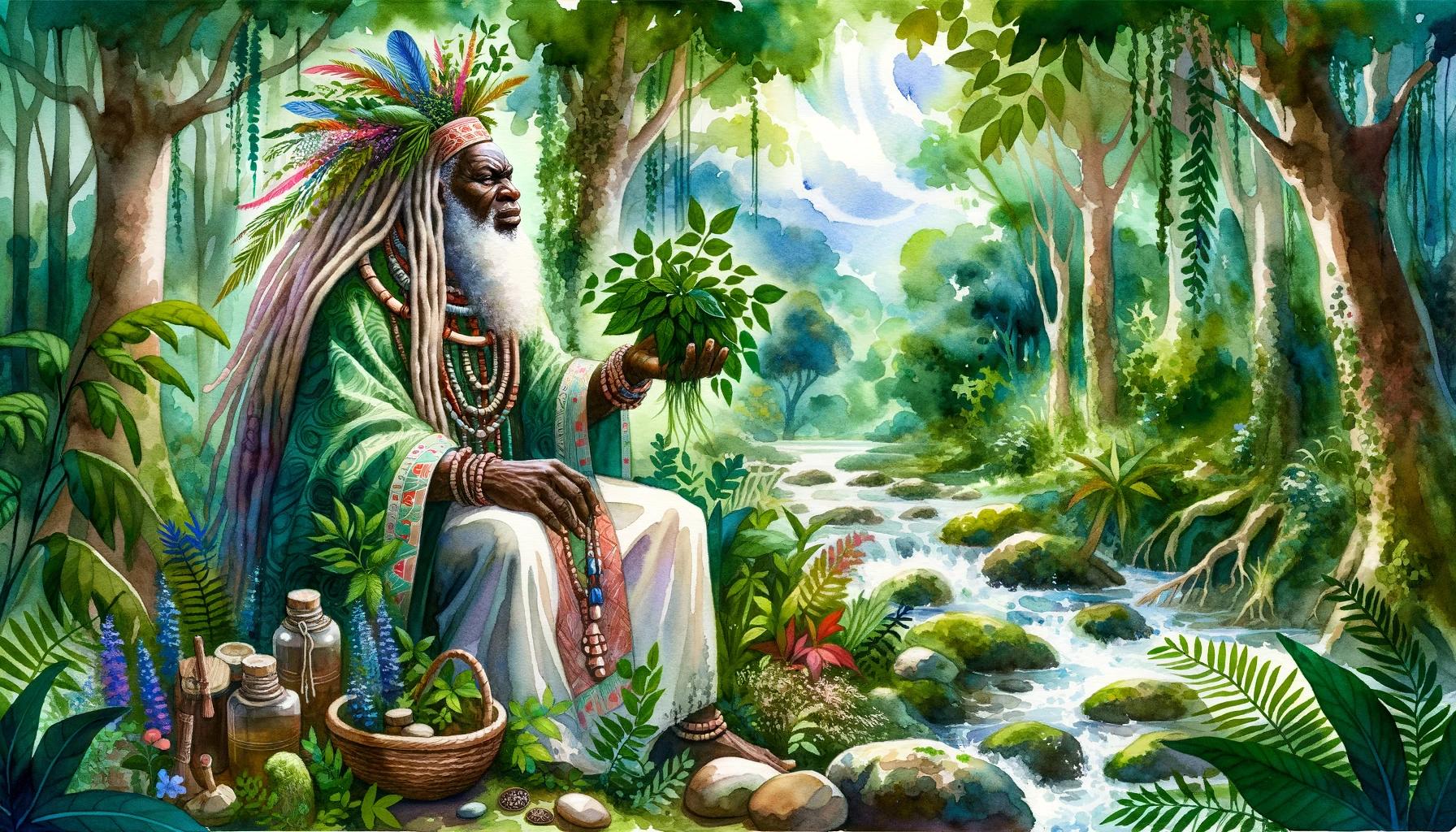
Erinle is an African deity revered in various African spiritual traditions, including Santería, Candomblé, and Palo Mayombe, as well as the Yoruba tradition. Known as the god of health and medicinal healing, Erinle also holds the role of protector for the LGBTQ+ community.
With a strong connection to estuaries and their symbolism of life and healing, Erinle is depicted as a robust and androgynous warrior adorned with shells, coral, and feathers. This brief introduction provides an overview of Erinle’s significance and introduces the topics to be explored in detail in the following sections.
Overview of Erinle in African Mythology
In African mythology, Erinle holds a significant position as a revered deity. Known as the god of health and medicinal healing, Erinle is a powerful figure in various African spiritual traditions, including Santería, Candomblé, Palo Mayombe, and the Yoruba tradition.
Erinle’s association with healing and well-being makes him an essential figure in the spiritual beliefs of many individuals.
The symbolism associated with Erinle reflects his connection to the estuary, which serves as a metaphorical representation of the merging of fresh and saltwater.
This connection signifies his role as a source of life and healing, as he embodies the harmony of opposing elements. As the deity of health, Erinle’s presence is believed to bring physical, emotional, and spiritual well-being to those who seek his aid.
Erinle’s persona is often depicted as a strong and healthy warrior, characterized by long hair and fine, feminine features that contribute to an androgynous appearance. Adorned with shells, coral, and feathers, he highlights his affiliation with healing and medicine.
The presence of serpents coiled around him symbolizes his association with the power of healing, as serpents were believed to possess transformative and curative properties.
The mythology surrounding Erinle includes intricate relationships and challenges.
According to a Cuban myth, Erinle’s close bond with Abbata, also a banished child of the sea goddess Yemaha, led to a passionate friendship turned romantic due to their shared isolation and loneliness.
This myth explains the origin of homosexuality and sheds light on Erinle’s role as a protector of the LGBTQ+ community.
Despite facing personal hardships, Erinle emerged as a revered figure renowned for his ability to heal and hunt.
He earned the respect of humans through his formidable hunting skills and his wisdom of the natural world. Erinle’s divine influence and capabilities ensured the protection of mortal communities, and once he had garnered the admiration of all, he would retreat into the forest, transforming into a massive elephant and disappearing from human sight.
In addition to his connection to African mythology, Erinle shares an association with the archangel Raphael. This connection emphasizes his role in healing and medicine, as Raphael is often depicted with fish and serves as the patron of nurses, doctors, and other healthcare professionals.
This link between Erinle and Archangel Raphael further solidifies his significance in the realm of wellness and healing.
The Significance of Erinle in African American Spiritual Traditions
In African American spiritual traditions, Erinle holds great significance as a divine entity associated with healing, vitality, and protection. As descendants of African heritage, African Americans have preserved and adapted their ancestral beliefs and practices, integrating Erinle into their spiritual framework.
African American communities honor Erinle as a powerful force of health and medicinal healing. With a deep understanding of the natural world and the wisdom of the forest, Erinle is believed to possess the knowledge and power to restore physical and spiritual well-being among believers.
Erinle’s association with the LGBTQ+ community is particularly relevant in African American spiritual traditions. As a god who embraces diversity and inclusivity, Erinle is revered as the protector and guide for individuals who identify as homosexual or transgender.
In a society that has historically marginalized and discriminated against LGBTQ+ individuals, the inclusion of Erinle in African American spiritual practices sends a message of acceptance and support.
Within the context of African American spirituality, Erinle’s symbolism as the god connected to estuaries is deeply meaningful.
Estuaries, where fresh and saltwater merge, represent the intersection of different elements and energies. This symbolism resonates with the experience of African Americans, who often navigate the intricate dynamics between their African cultural heritage and their American identity.
- Erinle’s presence in African American spiritual traditions reflects the complex history of African diaspora, where diverse cultural traditions have been preserved and transformed.
- As believers seek healing and spiritual guidance, they turn to Erinle’s wisdom and power, finding solace and strength in their ancestral roots.
- Erinle’s representation as a strong and androgynous warrior resonates with the ideals of resilience and empowerment that are celebrated within African American culture.
The inclusion of Erinle in African American spiritual practices is a testament to the resilience and ongoing vitality of African traditions within the African American community.
It serves as a reminder of the cultural heritage that has been preserved and cherished, providing a source of strength and connection for individuals who seek spiritual guidance and healing.
Erinle: The God of Health and Medicinal Healing
Erinle, the African god, holds a significant role as the god of health and medicinal healing in various African mythologies and spiritual traditions.
This powerful deity is believed to possess the ability to bring forth healing and restore well-being to those in need.
The association of Erinle with health and medicinal healing showcases the importance placed on physical and spiritual wellness within African societies.
As a deity revered for these specific domains, Erinle is often sought after for guidance and intervention in matters of illness and afflictions.
In African American spiritual traditions, Erinle’s influence extends beyond physical healing.
Many followers turn to this deity as a source of emotional and mental well-being, seeking solace and strength in times of distress. The belief in Erinle’s ability to restore balance and provide remedies for ailments contributes to the god’s revered status within these spiritual practices.
Erinle’s portrayal as a deity of health and medicinal healing is often symbolized through various visual representations. Adorned with intricate shells, coral, and feathers, Erinle’s attire highlights the god’s connection to the healing forces of nature.
The presence of these natural elements signifies Erinle’s alignment with the inherent remedies found in the environment.
Furthermore, Erinle’s association with estuaries holds symbolic significance in understanding the god’s role in health and healing.
Estuaries represent the convergence of both fresh and saltwater, embodying the balance between different aspects of life. In this context, Erinle’s connection to estuaries emphasizes the belief in the interplay of various elements for optimal health and well-being.
As a deity associated with medicinal healing, Erinle is revered for possessing immense knowledge of herbal remedies and natural cures. The god’s wisdom in utilizing the healing properties of plants, roots, and other natural resources has solidified the reputation of Erinle as a powerful healer.
In African American spiritual practices, devotees invoke Erinle’s guidance and assistance in matters ranging from physical ailments to spiritual disconnection. The faithful seek blessings and rituals that invoke the healing energies of Erinle, allowing divine intervention and restoration of harmony within the individual’s body and soul.
In conclusion, Erinle’s significance as the god of health and medicinal healing resonates deeply within African American spiritual traditions. The deity’s association with physical, emotional, and spiritual well-being underscores the belief in the interconnectivity of these aspects.
With an understanding of Erinle’s role in promoting healing and restoring balance, followers turn to this deity in times of need, seeking solace, remedies, and spiritual guidance.
Erinle’s Association with the LGBTQ+ Community
One remarkable aspect of Erinle’s divine presence is their role as a protector and ally to the LGBTQ+ community.
In many African traditions, Erinle is revered for their acceptance and support of individuals who identify as homosexual or transgender. This highlights the inclusivity and diversity emblematic of African spiritual practices.
Erinle’s association with the LGBTQ+ community stems from their embodiment of balance and harmony, qualities that extend beyond gender norms or sexual orientations. As the god of health and healing, Erinle recognizes that the well-being of all individuals, regardless of their sexual identity, is paramount and deserving of divine care.
Through their divine influence, Erinle offers solace and protection to those who may encounter discrimination or prejudice due to their LGBTQ+ identities. They serve as a symbol of acceptance and a source of strength for individuals within the community, offering guidance and support on their spiritual journeys.
It is important to note that Erinle’s alliance with the LGBTQ+ community is not limited to African spiritual traditions. In African American spiritual practices, which draw inspiration from various sources including African mythology, Erinle is also revered as a champion of LGBTQ+ rights.
This recognition demonstrates the impact of Erinle’s divine presence in diverse cultural contexts, showcasing their relevance within the broader African diaspora.
Erinle’s association with the LGBTQ+ community signifies a powerful affirmation of love, acceptance, and equality within African spiritual belief systems.
By embracing individuals in all their diverse forms, Erinle exemplifies the inherent value and inherent worth of every human being, fostering an environment of inclusion and understanding.
The Symbolism of Erinle’s Connection with Estuaries
Erinle, the African god, holds a profound connection with estuaries, which serves as a symbolic representation of life and healing.
An estuary is a unique ecosystem where freshwater and saltwater meet, creating a harmonious balance between two different worlds. Just as an estuary acts as a natural transition zone, Erinle embodies the idea of bridging gaps and finding harmony in diversity.
The symbolism behind Erinle’s association with estuaries reflects his role as a deity of healing and restoration. The merging of freshwater and saltwater represents the convergence of different aspects, bringing together individual strengths to create a unified and balanced whole.
This symbolism encompasses the understanding that diversity, when embraced and honored, can lead to overall well-being and growth.
Furthermore, estuaries are often considered nurseries for numerous species. They provide a safe haven for various forms of life to thrive and grow.
In a similar vein, Erinle’s connection with estuaries signifies his nurturing and protective nature. Just as an estuary provides a supportive environment for the development of diverse organisms, Erinle safeguards and nurtures those seeking healing and transformation.
- Estuaries as a metaphor for healing:
- Represents the merging of different aspects and finding balance
- Serves as a transition zone where diverse elements come together
- Symbolizes the nurturing and protective nature of Erinle
The concept of estuaries also aligns with Erinle’s association with the LGBTQ+ community.
Just as an estuary brings together different bodies of water without judgment or segregation, Erinle embraces and protects individuals of all gender identities and sexual orientations. Through this symbolism, Erinle promotes acceptance, inclusivity, and the importance of celebrating diversity.
In conclusion, the symbolism of Erinle’s connection with estuaries represents his role as a healer, protector, and advocate for embracing diversity. Just as estuaries foster life and harmony, Erinle fosters healing and unity, creating a space where individuals from all walks of life can find solace, support, and transformation.
Erinle’s Persona: A Strong and Androgynous Warrior
Erinle, the African god of health and medicinal healing, embodies a persona that is both strong and androgynous. This deity is depicted as a powerful warrior with long flowing hair and fine feminine features, creating an appearance that blurs traditional gender boundaries.
Erinle’s androgynous nature serves as a symbol of the fluidity and diversity found within the human experience.
Adorned with vibrant attire, including shells, coral, and feathers, Erinle exudes an air of elegance and grace.
These decorative elements highlight the god’s connection to the healing arts and emphasize his role as a protector and guide for those seeking physical and spiritual well-being.
As a revered African god, Erinle’s physical attributes are not merely superficial, but rather a reflection of his inner strength and resilience.
The deity’s robust physique represents his prowess as a hunter, ensuring the safety and sustenance of his worshippers. Erinle’s muscular build and powerful presence epitomize the unwavering determination that characterizes his divine persona.
Furthermore, Erinle’s association with androgyny challenges societal norms and encourages the acceptance and celebration of diverse gender identities. In embracing an androgynous appearance, Erinle embodies the inherent beauty and strength found in non-binary individuals, and serves as a symbol of empowerment and inclusion for marginalized communities.
The Visual Symbolism of Erinle’s Appearance
Erinle’s distinctive representation encompasses various visual symbols that further enrich the understanding of his persona. The presence of snakes coiled around him symbolizes his inherent connection to healing and medicine, as serpents have long been associated with transformation and rejuvenation.
Additionally, the intricate adornments of shells, coral, and feathers carry profound symbolism. Shells represent protection and endurance, signifying Erinle’s role as a guardian and healer. Coral, with its vibrant hues and unique formations, symbolizes strength and resilience in the face of adversity.
Feathers, often associated with communication between the human and divine realms, signify Erinle’s ability to bridge the gap between physical and spiritual healing.
Overall, Erinle’s persona as a strong and androgynous warrior not only embodies the fascinating diversity within African mythology but also serves as a powerful representation of acceptance and empowerment for individuals of all genders and identities.
Erinle’s Mythological Relationships and Challenges
Erinle, the African god of health and healing, is not only known for his powerful abilities but also for his intricate mythological relationships and the challenges he faced in his divine existence.
These tales provide insights into the complexities and dynamics of Erinle’s divine persona.
One prominent myth tells the story of Erinle’s relationship with Oshun, the goddess of rivers. Their marriage ultimately ended in abandonment, highlighting the difficulties and marital problems they encountered.
Despite the love they once shared, Erinle was unable to approach Oshun due to her status as the wife of another deity.
In addition to his relationship with Oshun, Erinle had an unrequited love for Oba, Shango’s first wife.
The boundaries imposed by their divine roles prevented Erinle from pursuing a romantic connection with her. This unattainable love further exemplifies the complexities of Erinle’s personal relationships.
According to Cuban mythology, Erinle and Abbata, the exiled children of the sea goddess Yemaha, became friends and passionate lovers due to their shared isolation.
This myth also offers an explanation for the origins of homosexuality, muteness, and deafness. It portrays Erinle as a deity entangled in a complicated web of love, desire, and divine obligations.
While Erinle faced challenges in his personal life, he emerged as a powerful healer and hunter, known as the Great Elephant of the Earth. Utilizing his extensive knowledge of nature and forest wisdom, he earned the respect of humans and ensured their obedience.
Erinle dedicated himself to protecting mortals from harm, and once he had won the admiration of all, he returned to the forest, transforming into a massive elephant and disappearing from human sight.
These mythological relationships and challenges shed light on Erinle’s character, his emotional struggles, and the sacrifices he made in his divine journey. They deepen our understanding of his multifaceted nature and the complexities of his interactions with other deities and mortals.
The Transformation of Erinle: From Deity to Powerful Healer
Erinle, the African god of health and medicinal healing, embodies a remarkable transformation from a deity to a powerful healer in various African spiritual traditions. His journey unfolds with great significance and offers insights into his divine essence and healing abilities.
Erinle’s transformation begins with his portrayal as a revered deity, embodying attributes associated with strength, femininity, and nobility. As a powerful hunter, he commands respect and admiration from mortals. Adorned with long hair, delicate features, and elegant attire embellished with shells, coral, and bird feathers, Erinle’s androgynous appearance represents his unique connection with healing and nature.
This divine figure’s transformation takes shape as he delves deeper into the realm of healing and medicine. Drawing upon his profound knowledge of the natural world and the wisdom of the forest, Erinle becomes an esteemed curandero, skilled in the arts of medicinal remedies and practices.
He emerges as the great Elefant of the Earth, symbolizing his immense power and influence in promoting health, well-being, and protection.
Throughout his transformation, Erinle earns the respect and obedience of mortals, becoming their guardian against various dangers and ailments.
His presence brings solace and reassurance to those seeking remedies and healing. Erinle’s proficiency as a healer is further emphasized through his association with the archangel Raphael, the patron of nurses, doctors, and other medical professionals.
This connection highlights his profound connection to the realms of medicine and healing, strengthening his role as a powerful healer.
The transformation of Erinle not only transcends his physical form but also speaks to the challenges he faced along his divine path.
His mythological relationships and personal struggles shaped him into a multifaceted deity with a deep understanding of human emotions and complexities. Erinle’s complicated romantic involvements, including his marriage to Oshun and his unrequited love for Oba, illustrate the complexities of his divine persona.
As Erinle’s transformation culminates, he retreats back into the forest, vanishing from the sight of mortals. However, the impact of his healing prowess and enduring legacy persists. His tale serves as an inspiration for those seeking strength, healing, and spiritual guidance, underscoring the profound significance of Erinle as a deity-turned-healer within African spiritual traditions.
The Connection between Erinle and Archangel Raphael
Erinle, the African god of health and healing, shares a fascinating connection with the archangel Raphael in spiritual beliefs. Archangel Raphael, whose name means ‘God heals’, is often depicted with fish symbolism and wearing blue and pink attire.
As the patron of nurses, doctors, and other healthcare professionals, Raphael is associated with the healing arts. This connection between Erinle and Archangel Raphael underscores their shared domain of medicine and underscores the importance of healing in both African and Judeo-Christian spiritual traditions.
Both Erinle and Archangel Raphael embody the concept of healing, albeit in different cultural contexts. Erinle’s association with medicinal healing and his role as a patron deity of health aligns with the attributes of Archangel Raphael.
While Erinle represents the African spiritual traditions, Archangel Raphael is rooted in Judeo-Christian traditions. However, their shared focus on healing acts as a bridge between different spiritual belief systems and highlights the universal nature of the healing arts.
The connection between Erinle and Archangel Raphael speaks to the interconnectedness of diverse spiritual practices and the potential for shared understanding. It demonstrates that, despite different cultural backgrounds, the pursuit of healing and well-being remains a common thread among human societies.
This connection also showcases the dynamic nature of spirituality, where deities and beings from different traditions can intersect and influence one another.
Whether viewed through the lens of African mythology or Judeo-Christian beliefs, the connection between Erinle and Archangel Raphael illustrates the power of healing and the unifying force it possesses.
It reminds us that healing is an integral part of the human experience, transcending cultural boundaries and drawing upon the wisdom and guidance of diverse spiritual figures.
Frequently Asked Questions about Erinle as an African God
Here, we address some common questions regarding Erinle and shed light on the African deity’s significance in spiritual traditions.
What is the origin of Erinle as an African god?
Erinle has its roots in Yoruba mythology, originating from West Africa. The deity’s worship has expanded beyond its African origins and is now revered in various African diaspora religions, including Santería, Candomblé, and Palo Mayombe.
How is Erinle associated with health and medicinal healing?
Erinle is recognized as the god of health and medicinal healing, embodying the power to cure ailments and restore well-being. The deity’s connection to nature and extensive knowledge of forest resources contribute to his role as a potent healer.
Why is Erinle considered a protector of the LGBTQ+ community?
Erinle’s divine guardianship extends to the LGBTQ+ community, acknowledging the deity’s role as a safeguard for marginalized individuals. As a symbol of acceptance and inclusivity, Erinle provides protection and support to those who identify as homosexual or transgender.
What does Erinle’s association with estuaries signify?
Erinle’s connection with estuaries represents the convergence of fresh and saltwater, symbolizing the balance between life and healing. This symbolism reflects Erinle’s ability to bring harmony and restoration to those seeking physical and spiritual well-being.
How is Erinle depicted visually?
Erinle is often portrayed as a strong and healthy warrior, with long hair and fine, feminine features that contribute to an androgynous appearance. Adorned with shells, coral, and bird feathers, the deity emits elegance and power.
What are the mythological relationships and challenges encountered by Erinle?
Erinle’s mythological stories involve complex relationships, including friendships, passionate love affairs, and marital strife. These narratives shed light on the deity’s personal struggles, demonstrating their ability to overcome adversity and transform into a formidable healer.
How does Erinle connect with the Archangel Raphael?
Erinle is synced with the Archangel Raphael, known as the angel of healing. This correlation emphasizes Erinle’s association with the curative arts and highlights the intermingling of African spiritual beliefs with broader spiritual traditions.
.











